Search
Search Results
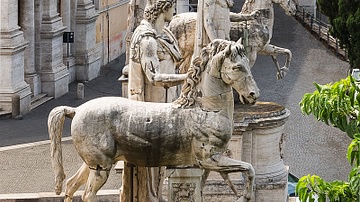
Definition
Castor and Pollux
Castor and Pollux (the Dioscuri) are figures from Greek and Roman mythology considered the twin sons of Zeus or Jupiter. Semi-divine figures, the twins were credited with the role of saving those in trouble at sea or in grave danger in war...
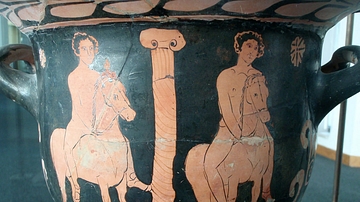
Image
Castor and Pollux
A red-figure vase possibly depicting Castor and Pollux (the Dioscuri), the hero twins of Greek mythology. 420-400 BCE, Lucanian. (Museo Provinciale Archeologico 'S. Castromediano,' Lecce, Italy)
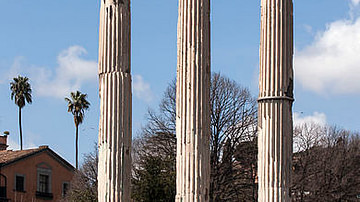
Article
Temple of Castor & Pollux
The Temple of Castor and Pollux in the Roman Forum of Rome was erected in the final decade of the 1st century BCE, replacing the earlier temple to the twin sons of Jupiter which had stood on the site since 484 BCE. Today only the inner concrete...
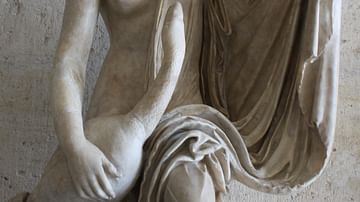
Definition
Leda
Leda is a figure from Greek mythology who was famously seduced by Zeus when he took the form of a swan. She was a queen of Sparta and mother of beautiful Helen who sparked the Trojan War, and the Dioscuri twins. Leda and the swan was a popular...
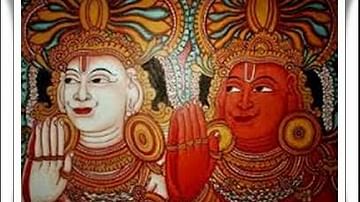
Definition
Ashvins
The Ashvins (aka Asvins, Asvinau, or Asvini Kumaras) are two twin brothers of Hindu mythology, sons of the sun god Surya. They may also be referred to as the 'Horsemen' and are forever young, handsome, and athletic. They are considered the...
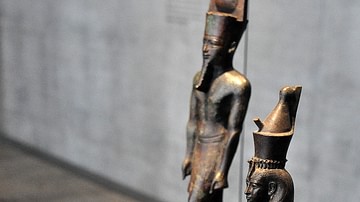
Article
Egyptian Gods - The Complete List
The gods and goddesses of Ancient Egypt were an integral part of the people's everyday lives for over 3,000 years. There were over 2,000 deities in the Egyptian pantheon, many whose names are well known - Isis, Osiris, Horus, Amun, Ra, Hathor...

Image
Temple of Castor & Pollux
The three remaining Corinthian columns of the Temple of Castor & Pollux in the Roman Forum, Rome. The present temple dates from the end of the 1st century BCE and early 1st century CE but replaced a temple also dedicated to the demi-god twins...
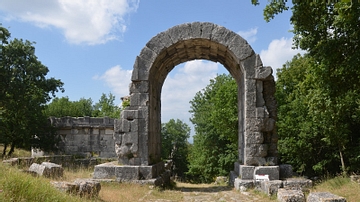
Article
Visitor’s Guide to Carsulae (San Damiano)
Carsulae in Umbria, central Italy, was founded c. 300 BCE and only became a prosperous urban centre after it was connected by the Via Flaminia towards the end of the 3rd century BCE. It was granted the status of municipium and acquired a...
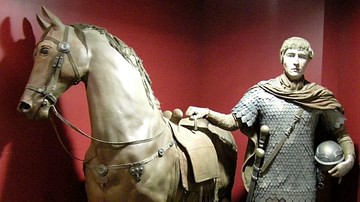
Definition
Roman Cavalry
Cavalry, although never replacing infantry as the mainstay of the Roman army, could provide useful cover on the flanks of armies, could be used as a shock tactic to cause disruption to enemy infantry formations, and could pursue an enemy...
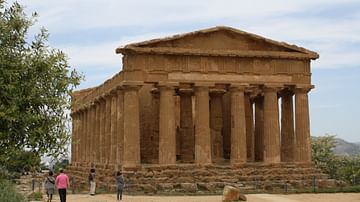
Definition
Agrigento
Agrigento (Greek: Akragas, Latin: Agrigentum) was a Greek-founded city-state located on the south coast of Sicily near the river Akragas (now S. Biagio) just 5 km from the sea. At its peak, the city may have had as many as 300,000 inhabitants...